Discovery of puerto rico day: DISCOVERY OF PUERTO RICO DAY – November 19, 2023
DISCOVERY OF PUERTO RICO DAY – November 19, 2023
Discovery of Puerto Rico Day, celebrated on November 19, commemorates the eventful occasion on which European explorer Christopher Columbus first landed in Puerto Rico back in 1493, after almost two months of sailing. The day is marked as a public holiday on the island, and many buildings are adorned with the country’s flag and nationalist memorabilia to honor the nation’s sovereignty and its indigenous roots, which can still be seen to this day. Join us as we review today’s hottest topic and celebrate the people from Puerto Rico, their vast heritage, and their colorful culture.
History of Discovery of Puerto Rico Day
Christopher Columbus was a man of conviction who believed — before anyone else — that there existed other ways, new paths yet to be discovered. In an age when people thought that everything had already been found, Columbus, an ardent student of geography and science, rowed his ship towards the unknown. His four infamous voyages unveiled the West. After the controversial results of his first adventure, he embarked on his second trip on September 24, 1493, with over 1200 soldiers sprawled on 17 ships. Nearly two months later, he anchored in a bay near an island on November 19, 1943, which he later named San Juan Bautista.
His four infamous voyages unveiled the West. After the controversial results of his first adventure, he embarked on his second trip on September 24, 1493, with over 1200 soldiers sprawled on 17 ships. Nearly two months later, he anchored in a bay near an island on November 19, 1943, which he later named San Juan Bautista.
Almost all American countries have dedicated a day to point out the inception of their nation through Columbus. Discovery of Puerto Rico Day honors the journey of the explorer and acknowledges the indigenous culture, dialect, and traditions of the land at the same time. The nation has recognized Columbus on numerous occasions. Their Spanish heritage was honored in 1893, on the 400th anniversary of his landfall, with a stamp that depicted his figure on a ship with a crew in the background.
Discovery of Puerto Rico Day is a national holiday on the islands. Banks, schools, and public offices are closed on this day, and a grand parade is organized in every major city. The day also signals the arrival of the holy month of December. Christmas decorations go up right after the holiday.
The day also signals the arrival of the holy month of December. Christmas decorations go up right after the holiday.
Discovery of Puerto Rico Day timeline
1493
The Arrival
European explorer Christopher Columbus makes landfall in Puerto Rico.
1897
The Road to Self Governance
The Prime Minister of Spain, Práxedes Mateo Sagasta, grants the island an autonomous government on November 25.
1898
American Control
Spain relinquishes Puerto Rican territory to the United States after the Spanish–American War.
1952
The Commonwealth’s Constitution
Puerto Rico adopts a new constitution that enshrines its status as a United States territory.
Discovery of Puerto Rico Day
FAQs
Is Puerto Rico an American state?
Puerto Rico is a colony of the United States.
Why is Puerto Rico called Borinquen?
Native indigenous communities called the island ‘Borinquen,’ which translates to “the land of the brave lord.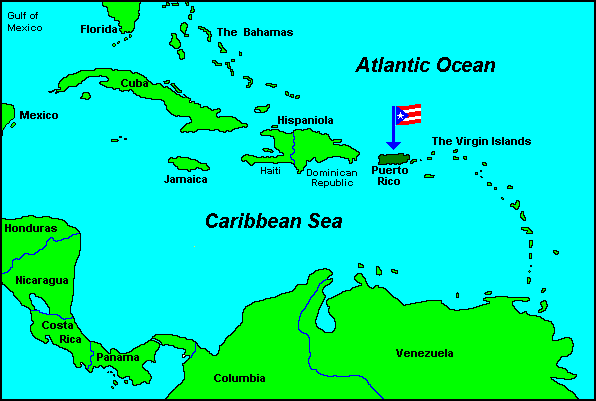 ”
”
Who lived in Puerto Rico before the Spanish?
The island’s native population is the Taínos.
Discovery of Puerto Rico Day Activities
Learn the history
Puerto Rico’s history didn’t start with its assimilation into North America. The rich and vast history dates back thousands of years. On Discovery of Puerto Rico Day, crack open the pages of a history book or watch a documentary about the origins of this beautiful island.
Visit Puerto Rico
A vacation in Puerto Rico is a promise of blue sky, palm trees, endless brunches, and sun-soaked afternoons by the beach. It is the perfect getaway and an impactful way to support the country’s economy.
Take salsa lessons
Salsa is the official dance of Puerto Rico. It is as fun as dances can get and offers a great workout for those interested. Celebrate their beautiful heritage with an independent salsa class and let yourself lose in the addicting beat of the congas.

5 Interesting And Unheard Facts About Puerto Rico
The sip of sunshine
Piña colada, Puerto Rico’s own invention, is also the national drink of the island.
The taste of the legends
Arroz con gandules, a rice assortment with salted pork and pigeon peas, is the national dish of Puerto Rico.
The funniest mascot
Puerto Rico’s national animal and official mascot is a frog, locally known as the ‘coqui.’
A necessary export
Puerto Rico’s largest export is pharmaceuticals.
The native name
Puerto Ricans are referred to as the ‘Boricua.’
Why We Love Discovery of Puerto Rico Day
It represents the day of discovery
Most American countries across the continent take a day to remember Christopher Columbus. For example, Pan-American Day is Belize’s official commemoration of the journey undertaken by the explorer.
It honors the past leaders
Discovery of Puerto Rico day honors the country’s prominent figures and the martyrs who stood against tyranny in the service of the nation.
 Their legacy should always be remembered.
Their legacy should always be remembered.It unites the island
On the anniversary of Columbus’ arrival on the island, Puerto Ricans unite and reflect on their Spanish heritage and what it means for their native communities. We must never forget there’s always a flip side.
Discovery of Puerto Rico Day dates
| Year | Date | Day |
|---|---|---|
| 2023 | November 19 | Sunday |
| 2024 | November 19 | Tuesday |
| 2025 | November 19 | Wednesday |
| 2026 | November 19 | Thursday |
| 2027 | November 19 | Friday |
Discovery of Puerto Rico Day
November 19, 2020
Posted by HI Cookery under 11 November | Tags: Discovery of Puerto Rico Day, pernil, Puerto Rican pork, pulled pork, slow cooker pork, slow-roasted pork |
[2] Comments
November 19: Discovery of Puerto Rico Day
It is interesting that islanders from the Atlantic Ocean came over to live on another island in the middle of the Pacific Ocean.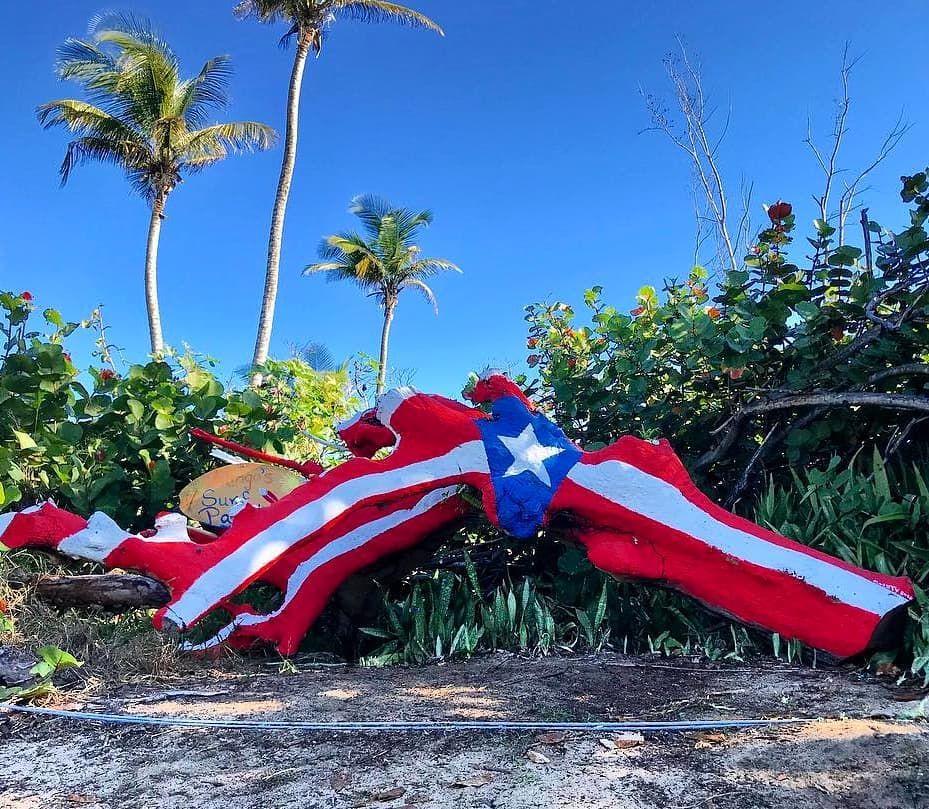 Puerto Ricans are a small but significant immigrant community in Hawaii. They first came over in the beginning of the 20th century to work in Hawaii’s sugar plantations after their island’s crops were destroyed by two hurricanes. Because of the similarities of tropical living and their experience in the sugar industry, Puerto Ricans were an asset to Hawaii. They shared their culture, music and, of course, food (like pasteles wrapped in banana leaves and arroz con gandules/rice and beans) and integrated with other immigrants and locals.
Puerto Ricans are a small but significant immigrant community in Hawaii. They first came over in the beginning of the 20th century to work in Hawaii’s sugar plantations after their island’s crops were destroyed by two hurricanes. Because of the similarities of tropical living and their experience in the sugar industry, Puerto Ricans were an asset to Hawaii. They shared their culture, music and, of course, food (like pasteles wrapped in banana leaves and arroz con gandules/rice and beans) and integrated with other immigrants and locals.
Another similarity is the tender roasted pork shoulder—kalua puaa in Hawaii and pernil in Puerto Rico. Both are cooked slow and on low heat. Although crockpot kalua pig is simpler with its ingredient list, for a change Islander sometimes admits that she likes the addition of a little Latin flavor in Puerto Rican pernil.
In honor of the Boricuas in Hawaii, we spiced up our kalua puaa recipe and prepared pernil. Discover this delicious dish from Puerto Rico and roast some pork on the Discovery of Puerto Rico Day.
Discover this delicious dish from Puerto Rico and roast some pork on the Discovery of Puerto Rico Day.
Recipe
Ingredients
- 4-5 pounds pork butt/shoulder
- ¼ teaspoon black pepper
- 1 tablespoon oregano
- 3 teaspoons salt (plus more to taste)
- 1 tablespoon vinegar
- 1 tablespoon olive oil
- 1 lime, juiced (plus 1 more lime sliced as optional garnish)
- 6-7 garlic cloves, minced
Directions
Wash the pork and pat dry with paper towels. Use a knife to cut slits throughout the meat so the marinade can penetrate beyond the surface. Make the marinade. In a small bowl, mix together the pepper, oregano, salt, vinegar, olive oil, lime juice and minced garlic.
Rub the marinade paste all over the pork. Cover and refrigerate overnight.
In a slow cooker, place the pork and the marinade in the pot. Cover and cook on low for 8-10 hours or on high for 4-6 hours. Place pork without its juices into a large bowl. Cut and shred with fork. Add a few spoonfuls of the juice over the shredded pork. Season with additional salt to taste. Garnish with lime slices and cilantro (optional). Serve hot with rice and beans, or as a filling in tortillas, and a side of fried plantains.
Place pork without its juices into a large bowl. Cut and shred with fork. Add a few spoonfuls of the juice over the shredded pork. Season with additional salt to taste. Garnish with lime slices and cilantro (optional). Serve hot with rice and beans, or as a filling in tortillas, and a side of fried plantains.
Notes
- Puerto Rico was discovered and claimed for Spain by the Italian Christopher Columbus on November 16, 1493. He landed on the island once called San Juan Bautista (St. John the Baptist). The Discovery of Puerto Rico Day is a national holiday and there is a parade to celebrate this date.
- Hawaii-born pop singer Bruno Mars is part-Puerto Rican/Pinoy!
[Discovery of the Lesser Antilles and Puerto Rico]. Travels of Christopher Columbus [Diaries, letters, documents]
[Discovery of the Lesser Antilles and Puerto Rico]
On Sunday, November 3rd, when dawn broke, the whole flotilla saw land. And so great was the universal joy, as if the heavens had opened before the sailors; this land was an island, which the admiral called Dominica, because he discovered it on Sunday [102].
And so great was the universal joy, as if the heavens had opened before the sailors; this land was an island, which the admiral called Dominica, because he discovered it on Sunday [102].
Then another island was seen to the right of Dominica, and many other islands appeared. All 3 thanked God and sang “Salve Regina”, then… [103] the fragrance of flowers, which everyone admired, began to come from the shore. People on ships saw countless green parrots flying in flocks like thrushes at certain times of the year and, as usual, the parrots filled the air with loud cries.
It was believed that from Homera to Dominica in 21 days 750 leagues were covered, or only a little more [104].
It seemed that there was no convenient harbor on the east coast of Dominica, and therefore the admiral headed for another island, the second in a row, to which he named “Marigalante”, because that was the name of the ship on which he sailed [105]. The admiral landed on the shore and on behalf of the kings of Leon and Castile took these lands into formal possession, having sealed the act with the signature of a notary [106].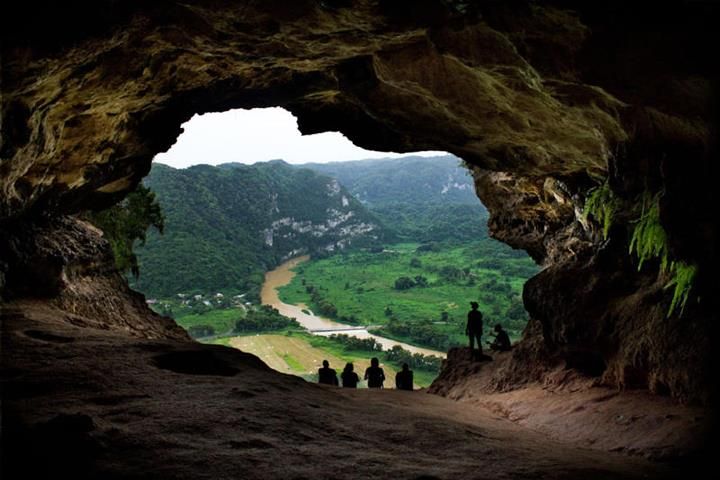
The admiral set out from there the next day, on Monday, and saw another large island, which he named Guadalupe [107]. The ships approached its shores, and after a convenient harbor was found, they anchored in it.
Then the admiral ordered several boats to be sent to the shore to inspect the village, which could be seen nearby. But the sailors did not find anyone in it, because all its inhabitants fled into the forest, noticing the ships. Here, for the first time, large, like roosters, parrots, which are called “guacamaya”, were met. They are multicolored (de muchos colores), but mostly red, rarely blue and white. In one of the houses they found a board from the ship, and everyone marveled at it and could not imagine how it got here. She was brought to this island by currents from the Canary Islands or from that coast of Hispaniola, where the admiral lost his ship on the first voyage.
On Tuesday, the fifth day of November, the admiral ordered two boats to be sent ashore to try to capture the inhabitants of the island and find out from them what was possible about this land and the people who inhabit it, and how far it is from Hispaniola.
Two young men were brought to the admiral, and they gave him signs to understand that they did not live on this island, but on another, which is called Boriquen (Boriquen) 4 . By all means possible (with hands, eyes and gestures expressing spiritual bitterness), they convinced the admiral that this island was inhabited by Caribs (caribes), who took them captive and brought them from Boriken to eat them, according to their custom.
Other boats returned and brought in six women who had fled from the Caribs. The admiral did not believe the stories about the cruelty of the Caribs and, in order not to turn the locals away from himself, he ordered the rosary, rattles, mirrors and other things intended for barter to be taken to the shore and the women taken away to be returned. The Caribs attacked them and took away, in front of the sailors who set sail from the shore, all the gifts that the admiral had presented to these women.
To the boats that were later sent for water, the same women ran again, taking with them two boys and one young man, and they all begged the Christians to be taken to the ships.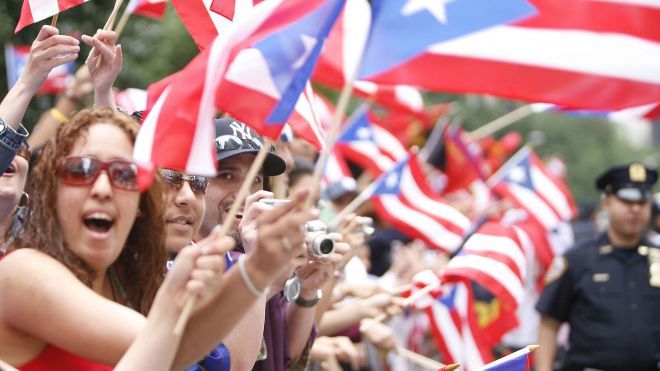 The young man said that south of this island there were many other islands and a large land, and he called each of these islands by name. The admiral asked them, explaining by signs, where the island of Hispaniola lies … They pointed in the direction where the sun sets, and although the admiral knew from the map of his first discovery how to get to Hispaniola in a direct way, he listened to them with pleasure, wanting to know where he was their home side.
The young man said that south of this island there were many other islands and a large land, and he called each of these islands by name. The admiral asked them, explaining by signs, where the island of Hispaniola lies … They pointed in the direction where the sun sets, and although the admiral knew from the map of his first discovery how to get to Hispaniola in a direct way, he listened to them with pleasure, wanting to know where he was their home side.
He was about to set sail, but he was informed that Veedo [Inspector] Diego Marquez, who was the captain of one of the ships of the flotilla, landed without permission with eight people, and he behaved very defiantly. And, having gone ashore before dawn, these people have not yet returned to the ships. The admiral got angry, and not without reason, and sent a detachment of people in search of Diego Marquez.
However, after wandering all day, the people sent out to search found no one in the dense thicket of forests.
The admiral decided to wait for the stragglers all day, fearing they might get lost. Besides, even if he had left them a caravel, these people still would not have been able to get to Hispaniola.
Besides, even if he had left them a caravel, these people still would not have been able to get to Hispaniola.
The admiral again sent several detachments with drums ashore, hoping that Diego Marquez’s people would hear their battle, and ordered to shoot from the espingard [108]. But, having spent the whole day searching and not finding the lost ones, they returned to the ships.
For the admiral every hour was a year, and therefore he, although with great sadness, was still ready to leave these people. But he did not want to do this, so as not to leave them defenseless, fearing that all of them could be killed by the Indians or some other misfortune would fall upon them. Besides, he did not want to jeopardize the ship that was supposed to be waiting for them if these people stayed here.
The Admiral ordered that all ships replenish their supplies of water and firewood, and allowed sailors who wished to take a walk on the shore or wash their clothes to go to the island. He decided to send Alonso de Ojeda 5 , the captain of one of the ships, with a detachment of 40 people, to search and ordered Ojeda to note everything that was on this earth along the way.
He decided to send Alonso de Ojeda 5 , the captain of one of the ships, with a detachment of 40 people, to search and ordered Ojeda to note everything that was on this earth along the way.
Ojeda informed the admiral that he had found fragrant resin, gum, frankincense, wax, aloe, sandalwood, and other aromatic herbs and trees. Ojeda’s companions said they saw falcons, and hawks, doves, geese, nightingales, herons, and jackdaws were all over the place. They also met partridges and assured that they had, having traveled only six leagues, crossed 26 rivers, and in many the water reached the waist … In the end, Ojeda did not manage to find Diego Marquez and his people.
Diego Marquez’s men returned on Friday, November 8th and boarded the ship. They said that they got lost in large and dense forests and thickets and could not find their way to the bay. The admiral ordered that Diego Marquez be taken into custody and that his companions be punished.
The admiral landed on the shore, wishing to inspect the houses located nearby, in which a lot of cotton yarn and raw material and a new type of spinning wheel were found.
Human heads and baskets with human bones were hung in the houses, and the buildings themselves were better than those that he saw during the first trip. The houses had more necessary utensils and food.
On Sunday, the tenth day of November, the admiral ordered the anchors to be raised and the sails to be set, and along the coast of the island of Guadalupe he set off to the northwest in search of Hispaniola. And he came to a very high island, which he called Montserrat, because its outlines were similar to the contours of the cliffs of this mountain range 6 .
And from the shores of Montserrat, he saw a beautiful island with steep banks, and they descended so steeply to the sea that it seemed as if they could only be climbed with the help of ladders or ropes thrown from above. He called this island “Santa Maria la Redonda” (St. Mary Round), and to another island near it he gave the name “Santa Maria Antigua” (St. Mary Ancient), and the coasts of this island stretched in length for 15 or 20 leagues.
From there one could see many other islands to the north, very high and densely forested. Near the shores of one of them, called “San Martin”, the admiral dropped anchor. When the anchor was raised, on one of its paws they found, as it seemed to the sailors, pieces of coral.
On Thursday, November 14, the admiral anchored off another island, to which he named “Santa Cruz” (Holy Cross). He ordered his men to land and try to capture the language of the locals.
Four women and two children were taken, and on the way back the boat met a canoe with four Indians and one Indian woman in it. Seeing that they would not be able to escape, they began to resist, and the Indian woman fought on an equal footing with the men. They fired arrows and wounded two Christians, and the woman shot her arrow with such force that it pierced through the shield. Then the Christians rushed swiftly to the canoe, overturned it and seized the Indians; one of them, swimming and not letting go of the bow, threw arrows from it with almost the same force as if he were on the ground. One of them had a reproductive organ (instrumento generativo) cut off, and the Christians thought that the Caribs had done it, wanting to feed him like a capon and then eat him.
One of them had a reproductive organ (instrumento generativo) cut off, and the Christians thought that the Caribs had done it, wanting to feed him like a capon and then eat him.
Following from this island to Hispaniola, the admiral encountered an infinite number of islands located at a close distance to each other. The largest of them he called “Santa Ursula”, and all of them together he gave the name “Eleven thousand virgins.” From there he came to another large island, which he named “San Juan Baptista”. Above we said that the Indians call one island “Boriken”, and it was this island that received the name “San Juan Baptista.” In one of the bays on its western shore, where the whole flotilla was engaged in fishing and where many different mad herrings (sabalos) and a large number of gobies (lizas) were caught, a group of Christians disembarked and headed towards houses built with great skill, although all they were made of straw and wood. These houses overlooked a square from where a smooth road led to the sea, which was well maintained and was like a street. Reed fences stretched along it, topped with greenery, as is done in the lemon and orange gardens of Valencia and Barcelona. Near the sea there was a strong, high and strong platform, on which 10-12 people could fit. It must have been the play-place of the lord of the whole island, or a given part of it.
Reed fences stretched along it, topped with greenery, as is done in the lemon and orange gardens of Valencia and Barcelona. Near the sea there was a strong, high and strong platform, on which 10-12 people could fit. It must have been the play-place of the lord of the whole island, or a given part of it.
The admiral says he didn’t get to see the locals here. They probably all fled as soon as they saw the ships.
Puerto Rico Attack
Attack of Puerto Rico
In the early morning of September 24, 1625, lookouts stationed in the bastion of San Felipe del Morro, located in the Puerto Rican fortress of San Juan, saw an endless string of sails going towards Boqueron Bay. Ships anchored three miles from
John Coxon’s attack on Puerto Bello
John Coxon’s attack on Puerto Bello
Despite the fact that in 1668 Puerto Bello was thoroughly ravaged by filibusters under the command of Henry Morgan, the Spaniards managed to rebuild the city from the ruins, and they continued to use its harbor as a parking lot
Capture of Puerto Principe 9 by Morgan’s Detachment0067
Capture of Puerto Principe by Morgan’s detachment
Henry Morgan became the “general” of the filibusters of Jamaica shortly after their former leader, Edward Mansfelt, was captured by the Spaniards and was executed by them in Cuba.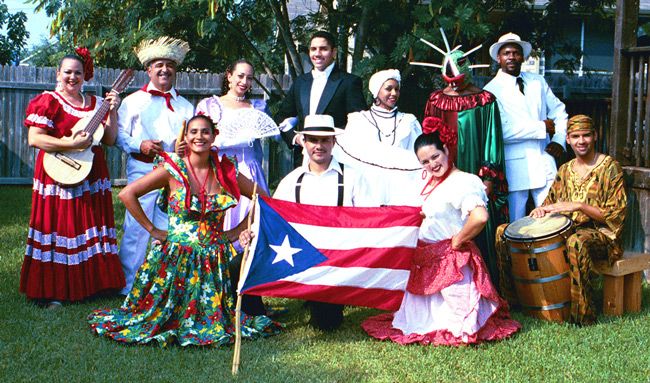 Morgan’s first operation as commander-in-chief was the audacious
Morgan’s first operation as commander-in-chief was the audacious
[Discovery of the Lesser Antilles and Puerto Rico]
[Discovery of the Lesser Antilles and Puerto Rico]
On Sunday, November 3, when dawn broke, the whole flotilla saw land. And so great was the universal joy, as if the heavens had opened before the sailors; this land was an island, which the admiral called Dominica, because
Chapter 23. Morgan’s stunning trip to Puerto Bello
Chapter 23
In June 1668, the commander of the Jamaican flotilla, having only 460 people under his command, decided to attack the city of Puerto Bello. From the report of Morgan himself, it is known that nine leaders
participated in this campaign.
Puerto Moorin
Puerto Moorin
This culture existed in the Viru valley on the north coast from the beginning of our era to 500. Not much is known about it – mostly what the burials preserved. The dead were buried in soil pits about 1.5 m long and about 0.5 m wide. Pokoinikov
Not much is known about it – mostly what the burials preserved. The dead were buried in soil pits about 1.5 m long and about 0.5 m wide. Pokoinikov
Chapter 32. DUTCH EXPANSION IN ASIA. DISCOVERY OF AUSTRALIA AND ISLANDS OF OCEANIA
Chapter 32
DUTCH EXPANSION IN ASIA. DISCOVERY OF AUSTRALIA AND THE ISLANDS OF OCEANIA
First Dutch expeditions to Indonesia
The heyday of Dutch power in the southern seas begins … in a Lisbon prison. There at 90s 16th century was imprisoned for debts by the Dutch sailor Cornelis
Cuba – the pearl of the Antilles
Cuba – the pearl of the Antilles
Bonpland’s illness proved to be protracted and serious. Humboldt took him higher to the mountains – in the hope that there it would be easier for his friend to cope with the disease. Only on July 10, 1800, after many months of uncertainty, they were able to start again
Information about Puerto Rico
Climate
Tropical trade winds, warm and very even. The average monthly temperature fluctuates slightly throughout the year – from +22-24 C in winter to +28-29 C in summer. Diurnal temperature changes are also weak, but in mountainous areas it can be cool at night. The temperature in the southern regions is usually somewhat warmer than in the north, and in the central mountainous municipalities it is always noticeably cooler than on the coast.
The average monthly temperature fluctuates slightly throughout the year – from +22-24 C in winter to +28-29 C in summer. Diurnal temperature changes are also weak, but in mountainous areas it can be cool at night. The temperature in the southern regions is usually somewhat warmer than in the north, and in the central mountainous municipalities it is always noticeably cooler than on the coast.
Precipitation falls from 800 to 2500 mm per year, and their distribution is rather uneven – the areas around the El Yunque peak receive up to 2000 mm of rain per year, while the southwestern regions receive no more than 850 mm.
Hurricanes are such a common occurrence in Puerto Rico that the English word "hurricane" itself is believed to be derived from the name of the god of evil in Taino mythology, Huracan. Powerful atmospheric whirlwinds roll over the territory of the country from May to November. The weather during this period is quite hot, very humid and windy (wind speed on the periphery of the typhoon can reach 150 km / h).
Population
The total population of the island is about 3.9 million (one of the most densely populated islands in the world), but outside the country (mainly in the USA) there are about 2 million Puerto Ricans (it is believed that in New There are more of them in York than in San Juan). At the same time, one third of the population is concentrated in the San Juan – Carolina – Bayamón metropolitan area, which makes the northeastern regions of the island one of the most densely populated in the Western Hemisphere.
The ethnic composition of the population is quite diverse – more than 90% of the country’s population consider themselves Puerto Ricans, but this ethnic group is heterogeneous. More than 70% of the population are Creoles (descendants of Spanish settlers), about 20% are mulattoes, 8% are descendants of immigrants from the African continent, about 0.4% are descendants of Indian peoples and another 0.2% are immigrants from the Asian mainland.
Geography
The island of Puerto Rico is located in the northern part of the Caribbean Sea, at the junction of the chains of the Lesser and Greater Antilles, being the smallest and easternmost island in the Greater Antilles group. It is washed by the Atlantic Ocean in the north and the Caribbean Sea in the south (the total length of the coastline is 501 km).
It is washed by the Atlantic Ocean in the north and the Caribbean Sea in the south (the total length of the coastline is 501 km).
In the west it borders on the Dominican Republic (along the Mona Strait), in the northeast – on the British Virgin Islands, and in the southeast – on the Netherlands Antilles (along the throat of the Anegada Strait).
Puerto Rico is almost rectangular in shape and relatively small – from east to west, its length is about 180 km, and its maximum width from north to south is about 65 km. The area of the island is about 9.1 thousand sq. km with a total area of \u200b\u200bthe territory (together with the islands) of about 13.7 thousand square meters. km. Puerto Rico also owns the islands of Vieques, Culebra, Mona, Culebrita, Palomino (sometimes this group of islands is called the Spanish Virgin Islands), Mona, Monito, Deseceo and Caja de Muertos, as well as other tiny islands that are part of the Leeward Islands group.
Religion
About 85% of the population are Catholics, about 10% are Protestants, but for the majority of believers, Christianity is combined with spiritualism, voodoo and Indian folklore and religious traditions.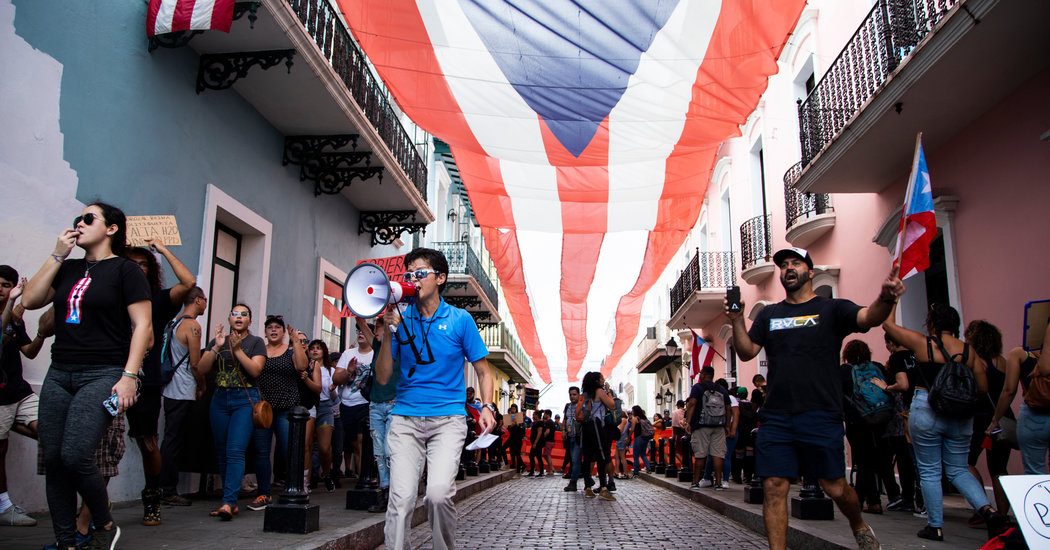
Language
The official languages are Spanish and English.
Holidays
January 1 – New Year.
January 6 – Epiphany or Three Kings Day.
January 9-11 – Birthday of Eugenio Maria de Ostos.
The third Monday in January is Martin Luther King Day.
Third Monday in February – President’s Day.
March 22 – Liberation Day (Slavery Abolition Day).
beginning of April – Good Friday.
April 16-21 – Jose de Diego Day.
The last Monday in May is Remembrance Day.
July 4th – US Independence Day.
July 15 – Luis Munoz Rivera’s birthday.
July 25 – Constitution Day.
July 26 – Birthday of José Celso Barbosa.
The first Monday in September is Labor Day.
The second Monday in October is Columbus Day (American Discovery Day).
November 11 – Veterans Day.
19November – Puerto Rico Opening Day.
The fourth Thursday in November is Thanksgiving Day.
December 25 – Christmas.
National Identities
Puerto Rican culture is a mixture of Spanish, African and Native American traditions heavily influenced by US culture.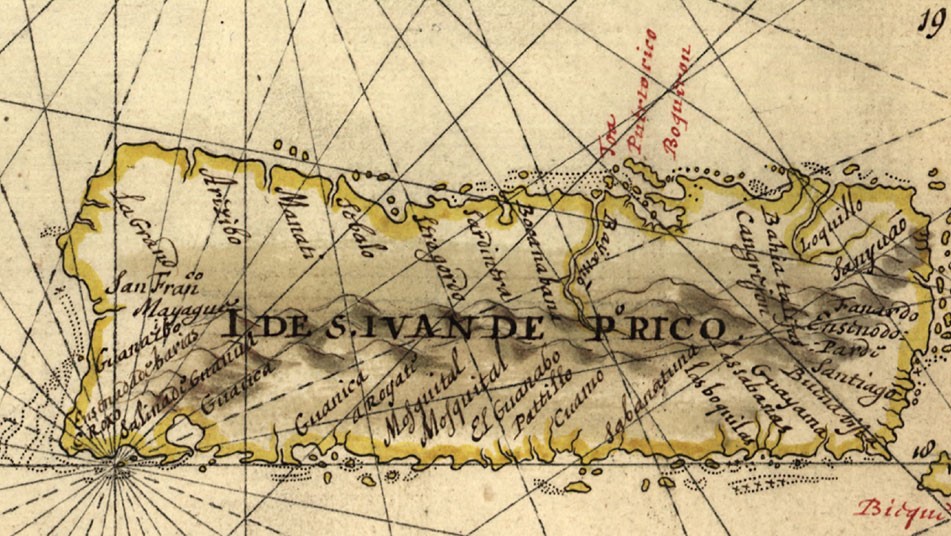 Puerto Ricans consider themselves Americans, but they always specify that they are "Puertoquenos" or "boricuas", and their homeland is Puerto Rico, not the United States. For most of them "my country" does not mean the USA, but precisely its small island, but the word "criollo" (Creole) usually means "everything": music, cuisine, language, art, people, religion and other aspects. The islanders are fiercely proud of their island and its culture, sometimes even opposing their traditions to the "poor", as they believe, the inhabitants of the North American continent. Hence the numerous conflicts between ethnic Puerto Ricans and residents of the United States, manifested both in mutual claims to a way of life and in the expansion of cultures, as well as the constant desire of the inhabitants of the island for national independence, expressed in constant debate about the status of the island in the modern world.
Puerto Ricans consider themselves Americans, but they always specify that they are "Puertoquenos" or "boricuas", and their homeland is Puerto Rico, not the United States. For most of them "my country" does not mean the USA, but precisely its small island, but the word "criollo" (Creole) usually means "everything": music, cuisine, language, art, people, religion and other aspects. The islanders are fiercely proud of their island and its culture, sometimes even opposing their traditions to the "poor", as they believe, the inhabitants of the North American continent. Hence the numerous conflicts between ethnic Puerto Ricans and residents of the United States, manifested both in mutual claims to a way of life and in the expansion of cultures, as well as the constant desire of the inhabitants of the island for national independence, expressed in constant debate about the status of the island in the modern world.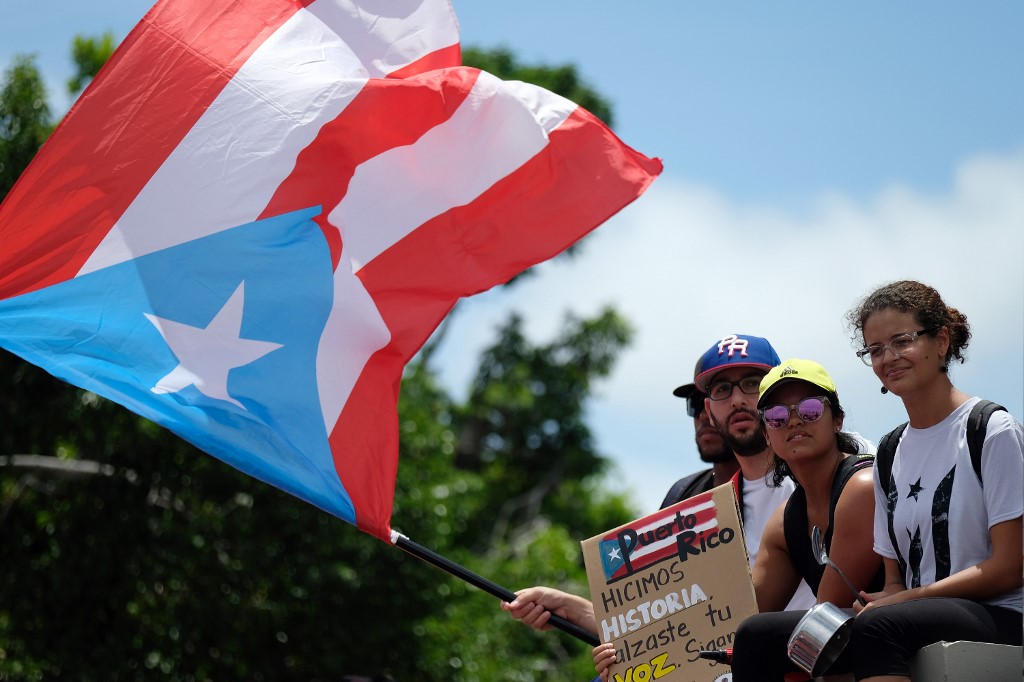 Puerto Ricans clearly see their difference from the people of the United States and believe that the island has much more in common with its Latin American neighbors than with Uncle Sam’s subjects.
Puerto Ricans clearly see their difference from the people of the United States and believe that the island has much more in common with its Latin American neighbors than with Uncle Sam’s subjects.
National cuisine
The locals call their cuisine "kosina criolla" and lead her ancestry from the traditions of the Indian peoples of the Arawak and Taino. However, even with the naked eye, you can find many differences between local cuisine and the original Indian cuisine, which was based on cereals, various root crops, fruits and seafood. Numerous local dishes of beef, pork, legumes, rice and wheat have clear Spanish roots, and they can also be clearly seen in the abundant use of vegetable oils, primarily olive. African slaves brought with them dishes of okra and taro, known in Puerto Rico as "yautia", as well as various herbs now used in abundance as seasonings. As a result, the mixture of all these components led to the formation of an exotic modern Puerto Rican cuisine, widely known far beyond the borders of the country. Puerto Rico and especially San Juan abound with first-class restaurants specializing in both local cuisine and Spanish, Chinese, French, Greek or Italian cuisine.
Puerto Rico and especially San Juan abound with first-class restaurants specializing in both local cuisine and Spanish, Chinese, French, Greek or Italian cuisine.
Visa
Puerto Rico is a US possession in the West Indies. Citizens of Russia are required to have a visa, which is issued at the US embassies located on the territory of the Russian Federation.
US citizens do not require a visa, Canadian citizens only need to present photographs and an ID card. Citizens of many Western European countries, Australia, New Zealand and Japan can take advantage of the US Mutual Visa Waiver Program if they intend to stay in Puerto Rico for less than three months.
Types of visas
Category B (B, B-1, B1 / B2) – short-term tourist, guest and business trips.
Category C is a transit visa.
Category F, M – training, exchange.
Currency
US dollar (USD, US$)
Currency exchange
Banks are open from Monday to Friday from 8.30-09.00 to 14.30-15.30 (working hours may vary).
Foreign currency can be exchanged at banks and specialized exchange offices.
Credit cards have virtually unlimited uses. In all large settlements there are many ATMs (ATM), and some of them, usually designated ATH ("a todas horas" – "at any hour"), are located in banks, supermarkets, casinos and most major hotels) are open 24/7. In the province, the use of credit cards is somewhat limited, but not impossible – they are accepted for payment in most transport and travel agencies, hotels and large stores.
Traveler checks can be cashed in almost any bank office, which will require, in addition to the check itself, identifying documents (passport, credit card, driver’s license, etc.). To avoid additional costs associated with fluctuations in the exchange rate, it is recommended to take checks in US dollars with you (travel checks in other currencies can only be cashed at major banks).
Emergency phones
Unified Salvation Service – 911
I would be here
Add a review
Search Hotels
On -line around the world
Number of numbers
9000 1 2 3 4 4 6 7 8 9 10 10 10 10 10 10 10 11 12 13 14 15 16 17 18 19 20 21 22 23 24 25 26 27 28 29 30
40
50
100
> 100
1
adult
2
adults
3
adults
4
adults
5
adults
6
adults
7
adults
8
adults
9
adults
10
adults
eleven
adults
12
adults
13
adults
14
adults
15
adults
16
adults
17
adults
18
adults
19adults
20
adults
21
adult
22
adults
23
adults
24
adults
25
adults
26
adults
27
adults
28
adults
29
adults
thirty
adults
0
children
1
child
2
child
3
child
4
child
5
children
6
children
7
children
8
children
9children
10
children
New
travel maps
Show place on the map
Photos of Puerto Rico
Add a photo
Have been to
And
did you take pictures of the city and interesting places?
Post them!
Many visitors to our site take photos on their trips.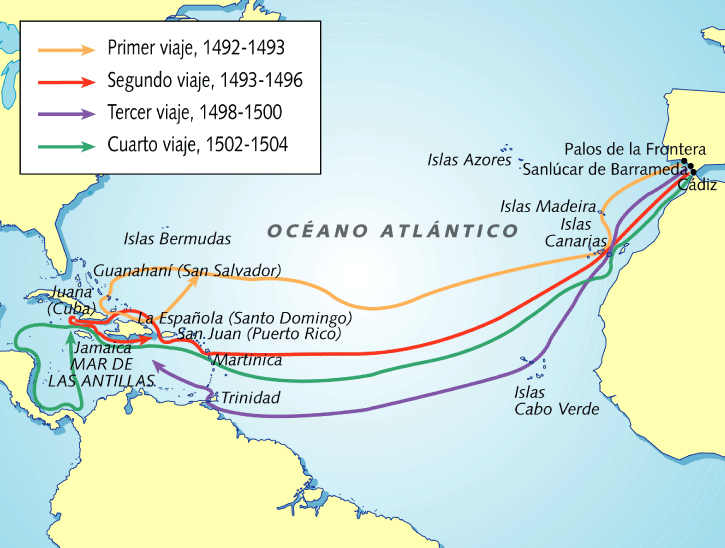
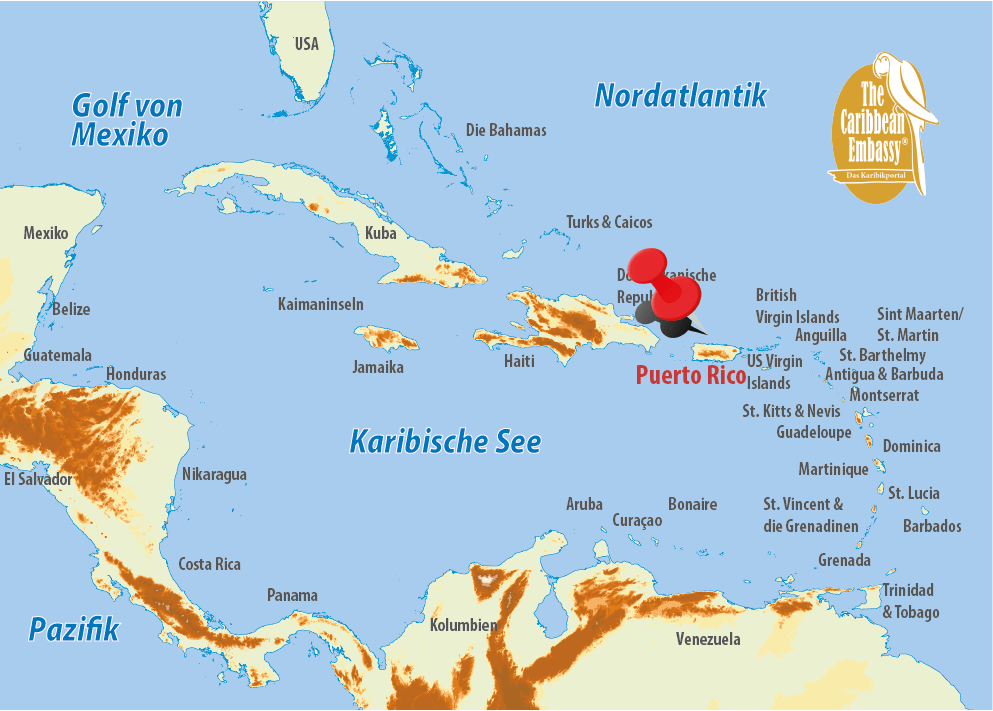
 Their legacy should always be remembered.
Their legacy should always be remembered.